Rene Matić
AS OPPOSED TO THE TRUTH
Opening: 7 Nov 2024, 6–9 pm
On 9 Nov 2024, Saturday, Rene Matić will give an exhibition tour at 3 PM. Free admission, no registration required. The tour will be held in English.
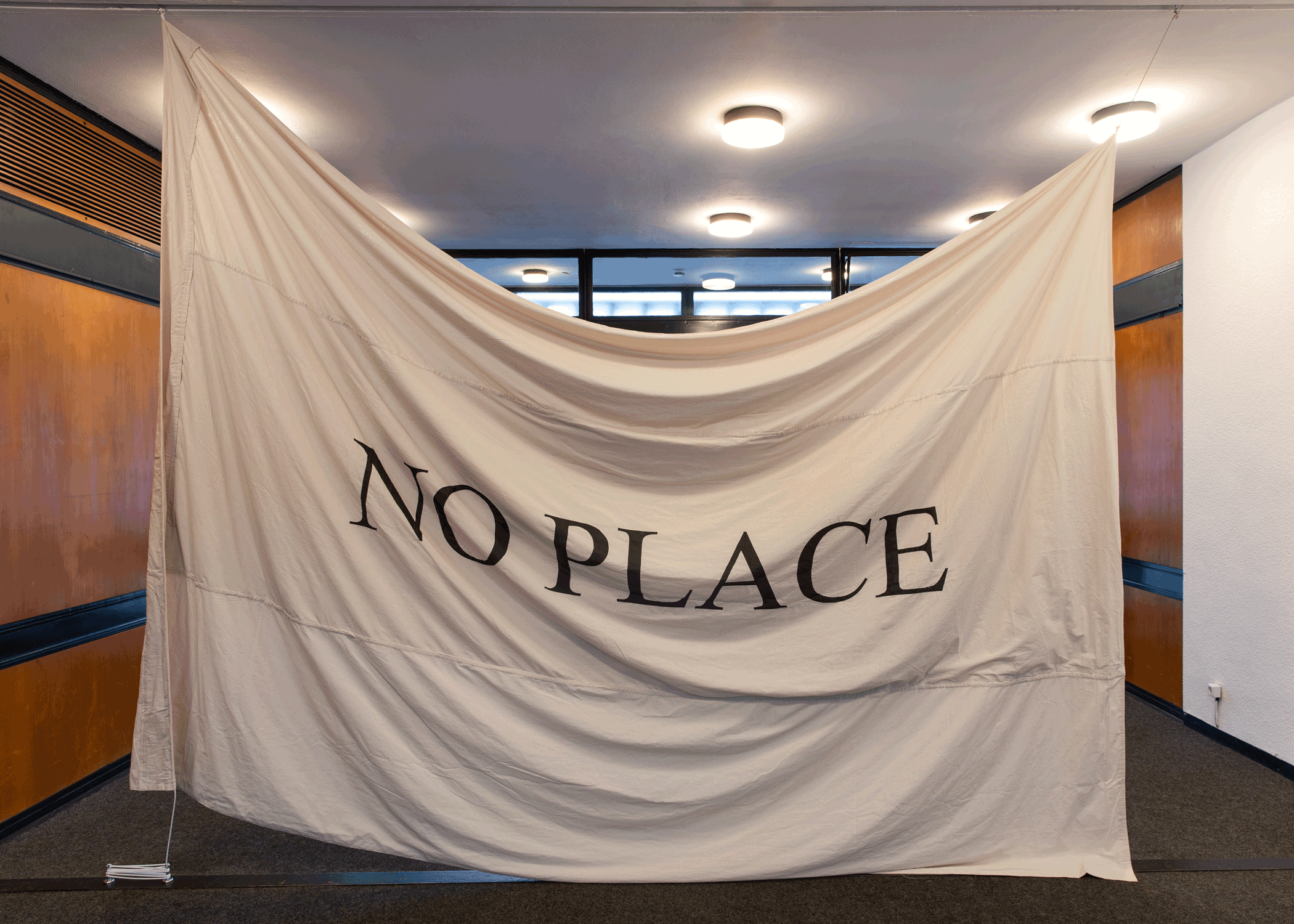
Rene Matić, Untitled (No Place for Violence), 2024, Installation view, CCA Berlin, 2024. Photo: Diana Pfammatter/CCA Berlin.
AS OPPOSED TO THE TRUTH marks the first institutional solo exhibition of British artist Rene Matić in Germany. Matić’s practice spans photography, film, sculpture, and poetry, often converging in an examination of the social dynamics of race, gender, and class manifested in intimate relationships. Central to their artistic inquiry is a critical inspection of national identity and its associated symbolics encapsulated in everyday images.
The exhibition at CCA Berlin features newly produced photographs and installations. An underlying thread in the artist’s highly personal images and works is a fascination with the way bodies, identities, and expressions of political alliance intersect amid the global rise of right-wing populism. At a time when political discourse is saturated with rhetorical grandeur and performative gestures, the vocabulary of compassion and the condemnation of violence can effectively create an illusion of care, while masking the harsh reality of systemic brutality. In the face of this double-sidedness of power, Matić looks for possibilities of resistance within the sphere of interpersonal relationships. For the artist, intimacies and desires, however fragile or illusory they might seem, can give true meaning to our individual reality. By holding space for the confluence of the personal and the political, the exhibition offers glimpses of how people cling to and care for each other, and how we learn to live with vulnerabilities, despite, or in defiance of the so-called truth.
Rene Matić has been collecting black dolls from thrift stores, the internet, and any other corner of the earth for many years––dolls that are often forgotten, neglected, and broken. Matić traces this obsession back to their father’s experience of abandonment as a black child growing up in Peterborough in the UK: “I adopted these babies in a way he wasn’t––carefully and lovingly.” The tenderness and protectiveness are evident in the way Matić speaks about, redresses, and homes these dolls, but the artist doesn’t flinch away from showing the impossibility of repair. The dolls’ racialized features, unbrushed hair, their broken limbs, and the traces of being wounded and uncared for all render our act of looking almost unbearable. For Matić, however, Restoration (2022–ongoing) is a private, poignant dreaming in the afterlife of irreparable hurt and absence. It dreams about a kind of love that persists in, through, and despite brokenness.
Matić’s infatuation with flags, on the other hand, comes from their keen awareness of the flag’s contradiction. For the artist, a flag resembles a coin, a pendulum of power, and a swinging door that lures people into the paradoxical trappings of identity and belonging. Much too often, it can be appropriated as a weapon that divides, unites, or kills. In Matić’s poetic visual realm, the installation Untitled (No Place for Violence) (2024) seeks to “embarrass the kind of principle of what a flag is supposed to be.”[1] The work quotes Joe Biden and Barack Obama’s reaction to Donald Trump’s assassination attempt in July: “There is no place for violence in our democracy.” Backdropped by the global debates around the attacks of 7 October 2023 and the ongoing war against Palestinians, which has so far claimed tens of thousands of lives, the installation points to a deceptive, two-fold logic of the Western political rhetoric: The condemnation of violence acts as a moral signifier of universal human rights while simultaneously relocating the root of evil to our democracy’s outside, where an exceptional form of violence (sovereign, colonial, anti-terror, or otherwise) is always already justified in the name of that democracy. If these are the two sides of the same coin, then how can we remain blind to the other side of the flag––the other side of the “truth”? Without putting our own reality at risk, how can we bear witness to those who are dying and living in the non-place of “legitimized” killings?
“Photographs speak in unique ways to our circumstances. They talk back to power, and they talk around and in between its silences and absences.”[2] Rene Matić’s lens is always poised toward this inherently subversive dimension of the everyday as identified by Tina Campt. In the photo series Feelings Wheel (2022–ongoing), snapshots of kisses and graffiti, glimpses from a pub, a street corner, parties, and protests are layered together into a maelstrom of emotions. These images seem less interested in representation, but more in feeling out the proximity of people’s lives. Here, Matić documents families and friends in their daily surroundings. The grainy texture of blown-up photos captures a private feeling, like sharing space with someone so you could feel the heat of their skin. Getting this close to somebody is not about representation, but a calling-into-presence of strangers whom we seem to intimately know: Bodies in search of love and connection, their vulnerabilities, the messes they leave behind, the empty space they inhabited a moment ago...Matić’s photographs draw us in, beckon us to take a look closer and closer still––not from the safe distance of a spectator, but almost touching and open to be touched. We see ourselves reflected in the stacked frames, becoming part of the spinning wheel. In the blur are all those little moments that make up who we are, and all the hidden places where we feel we’ve found home.
From the back room, layers of sound travel and resonate across the hallways. 365 (2024)[3] is a site-specific sound installation that responds to the particularities of the space. Recordings of the church bells and the chorale are sampled from the Kaiser Wilhelm Memorial Church. The church’s original bells had been cast from melted cannons, which were later remelted for war purposes. Similar to the layering of photos, Matić interweaves different soundscapes––from the church, the news, personal conversations, chanting at protests, heartbeats, and pop songs––to create a collage that attests to the extremely fractured realities we live in. Set in a room that visually recalls ballroom culture,[4] the piece goes through a wide range of intense emotions, punctuated by recordings of James Baldwin and bell hooks as they speak a “truer” kind of truth about death and love.[5] Toward the end, Rihanna’s Lift Me Up brings us back to where it all began, in an insistent yearning for love, in order to survive, to hold onto each other through broken histories, and listen for a heartbeat in the ruins of the world.
—— Nan Xi
[1] Rene Matić, interviewed by Frieze, London, October 2024.
[2] Tina Campt. A Black Gaze: Artists Changing How We See. Cambridge (MA): The MIT Press. 4. Tina M. Campt (1964–) is a black feminist theorist of visual culture and contemporary art from the US.
[3] The title of the work refers to the song 365 by Charli XCX from the album Brat released in summer 2024, which has gone viral internationally.
[4] Ballroom is a subculture that originated in Black and Latino queer communities in New York in the mid 20th century, particularly gaining traction in the 70s and 80s. It centers around “balls,” which are events where individuals, often organized into “houses,” compete in various categories related to dance, fashion, and performance.
[5] James Baldwin (1924-1987) was an African American writer and civil rights activist renowned for his novels, plays and poetry. bell hooks (1952-2021) was an African American author, theorist, educator, and social critic best known for her writings on race, feminism and class.
Supported by LEAP. With additional support from Arcadia Missa, London, and Francesco Paolo Francica. We are also grateful for our hospitality partner 25hours Hotels.
The exhibition will be extended by a publication on Rene Matić's work and practice, to be released in spring 2025.
The exhibition will be accompanied by a public program including guided tours and a three-part workshop series Home Is Where We Displace Our Selves.
Curators: Fabian Schöneich with Nan Xi
Production: Franz Hempel
Curatorial Fellow: Pauline Herrmann
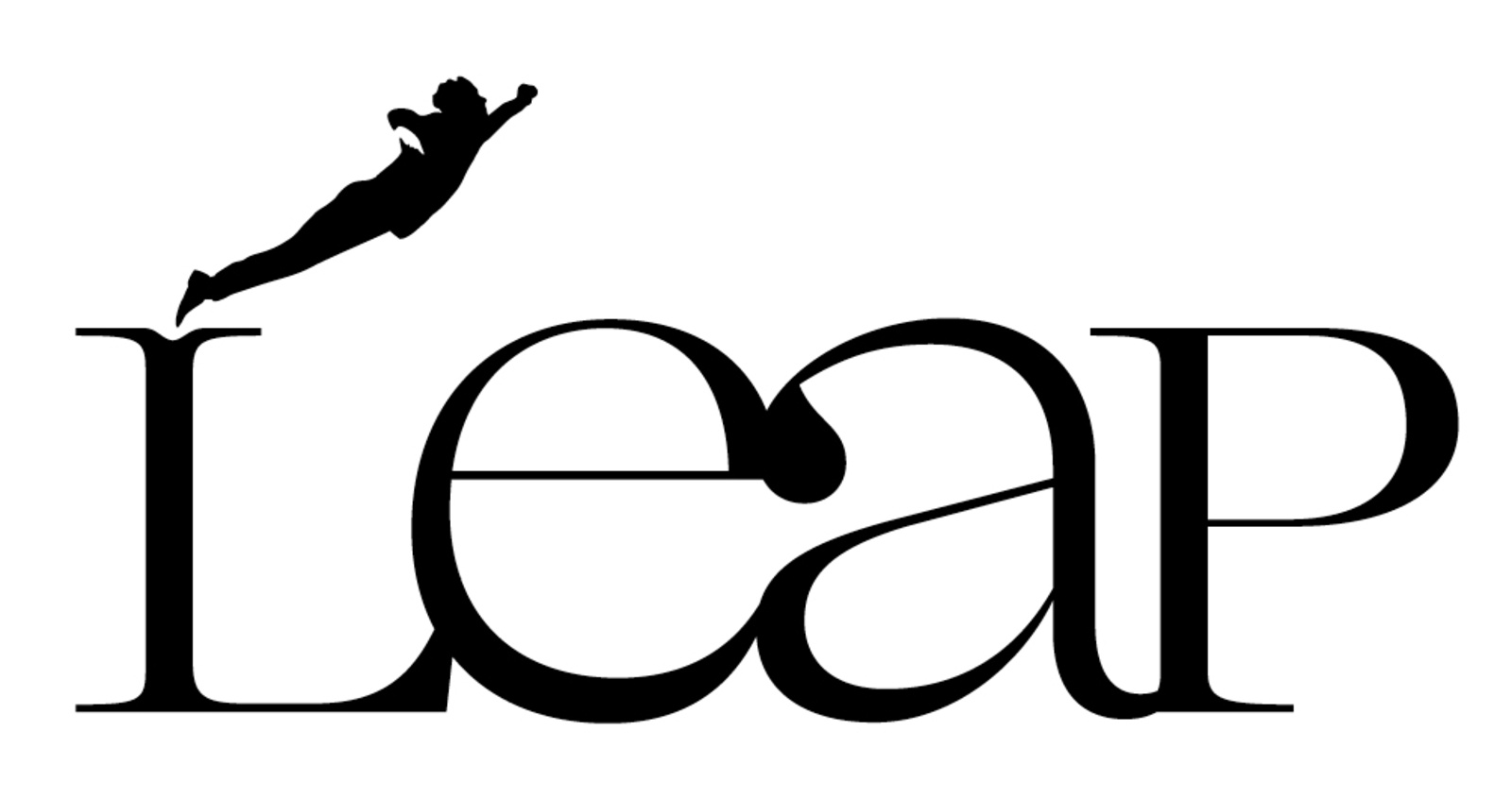
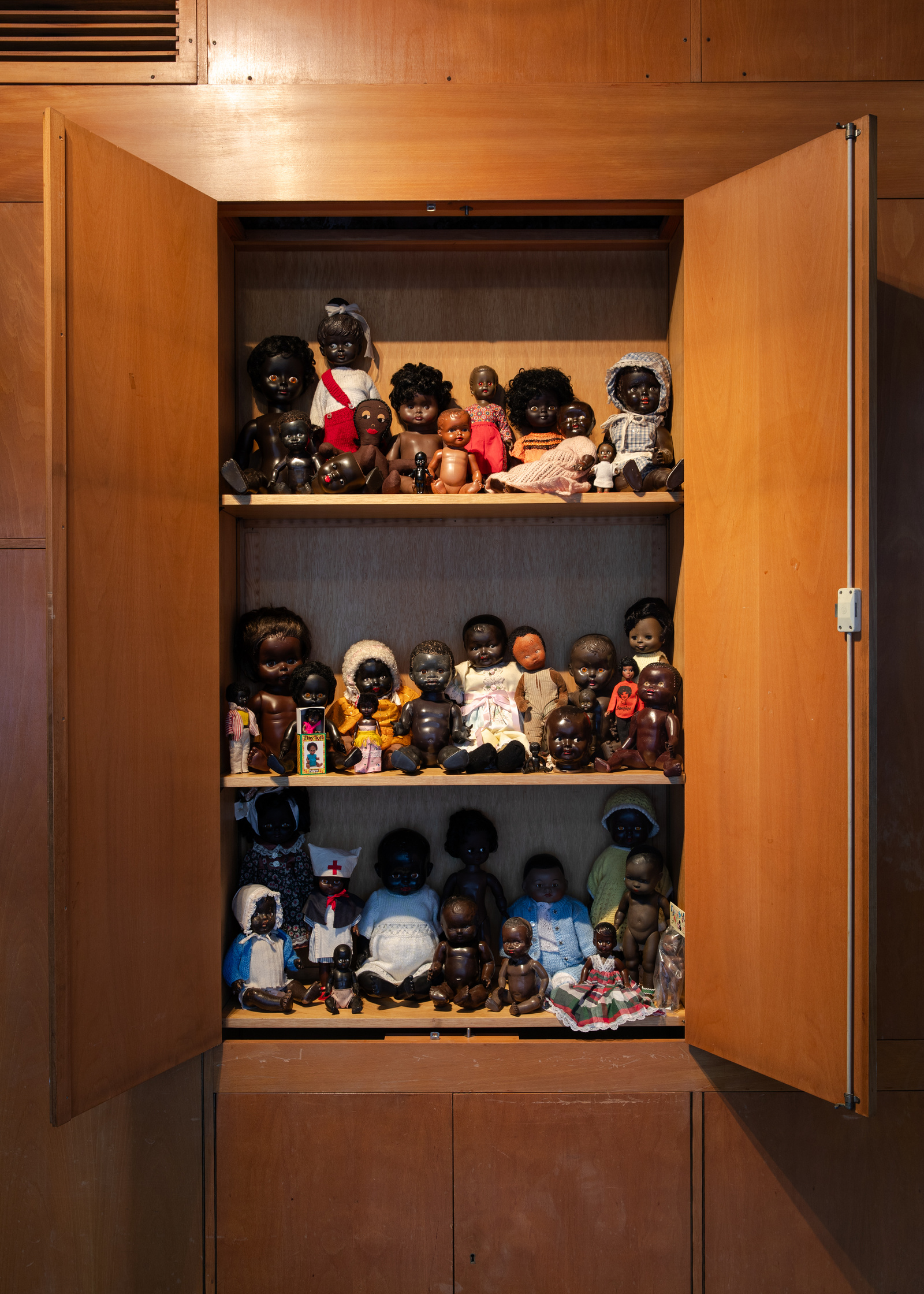
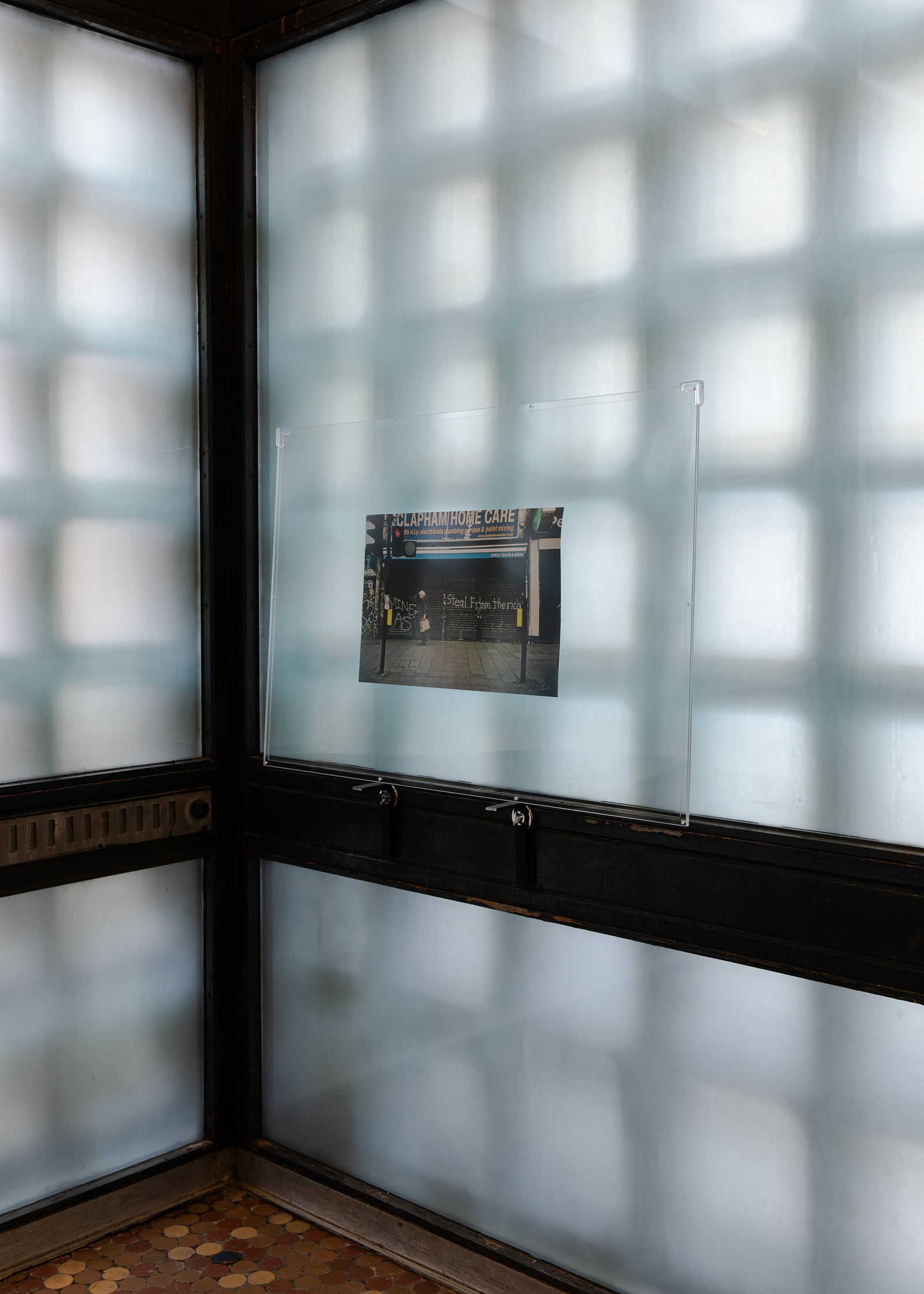
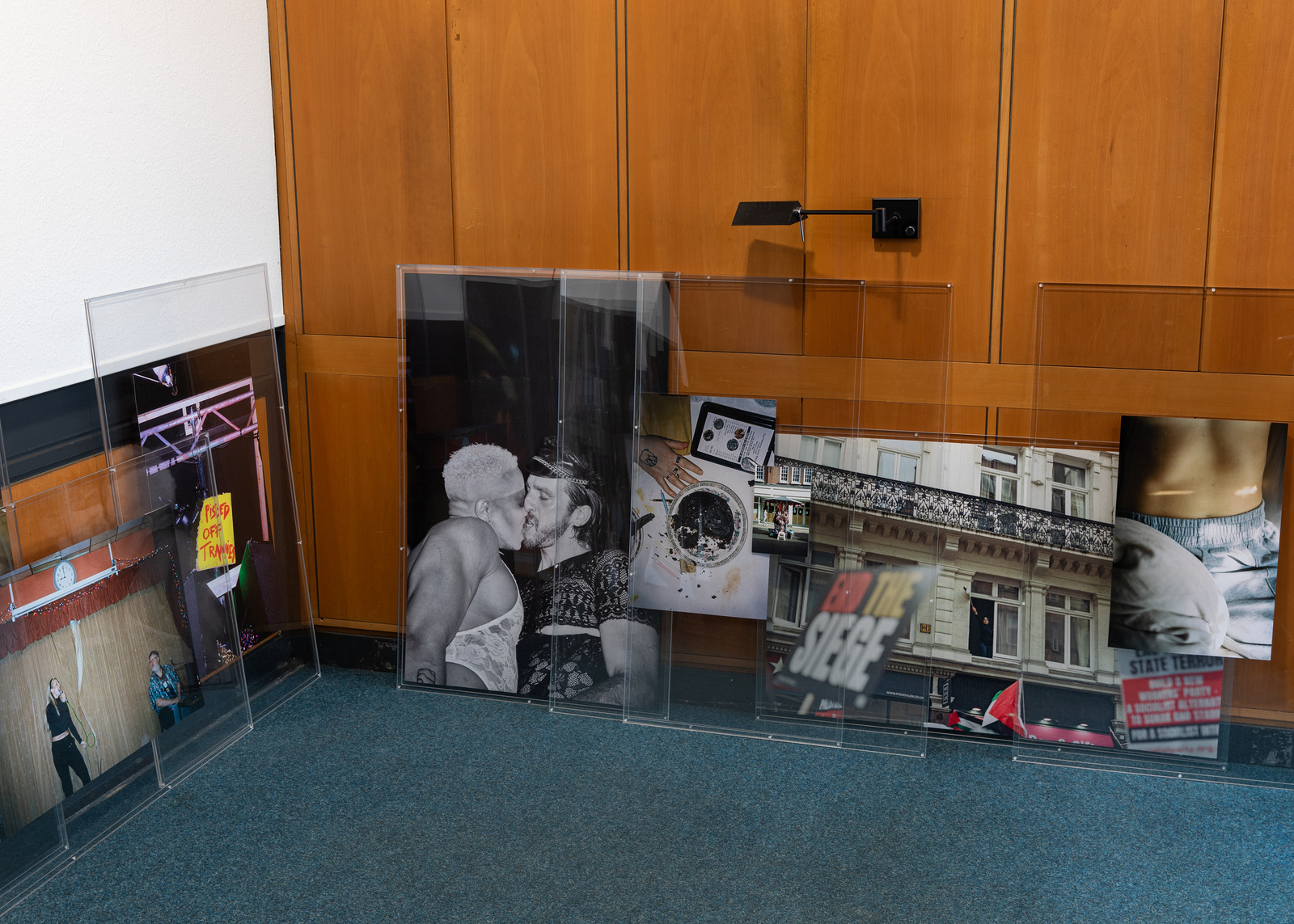
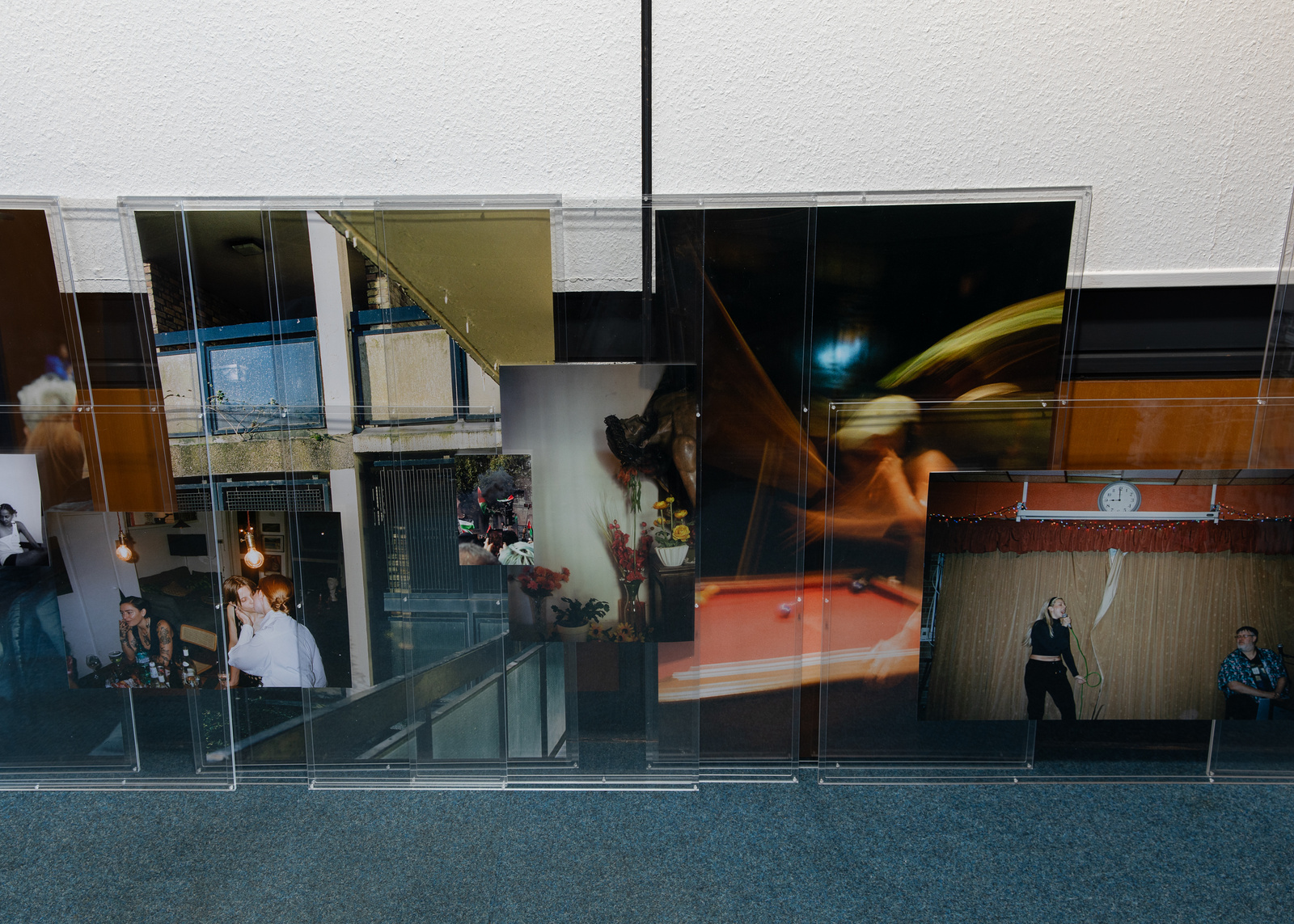
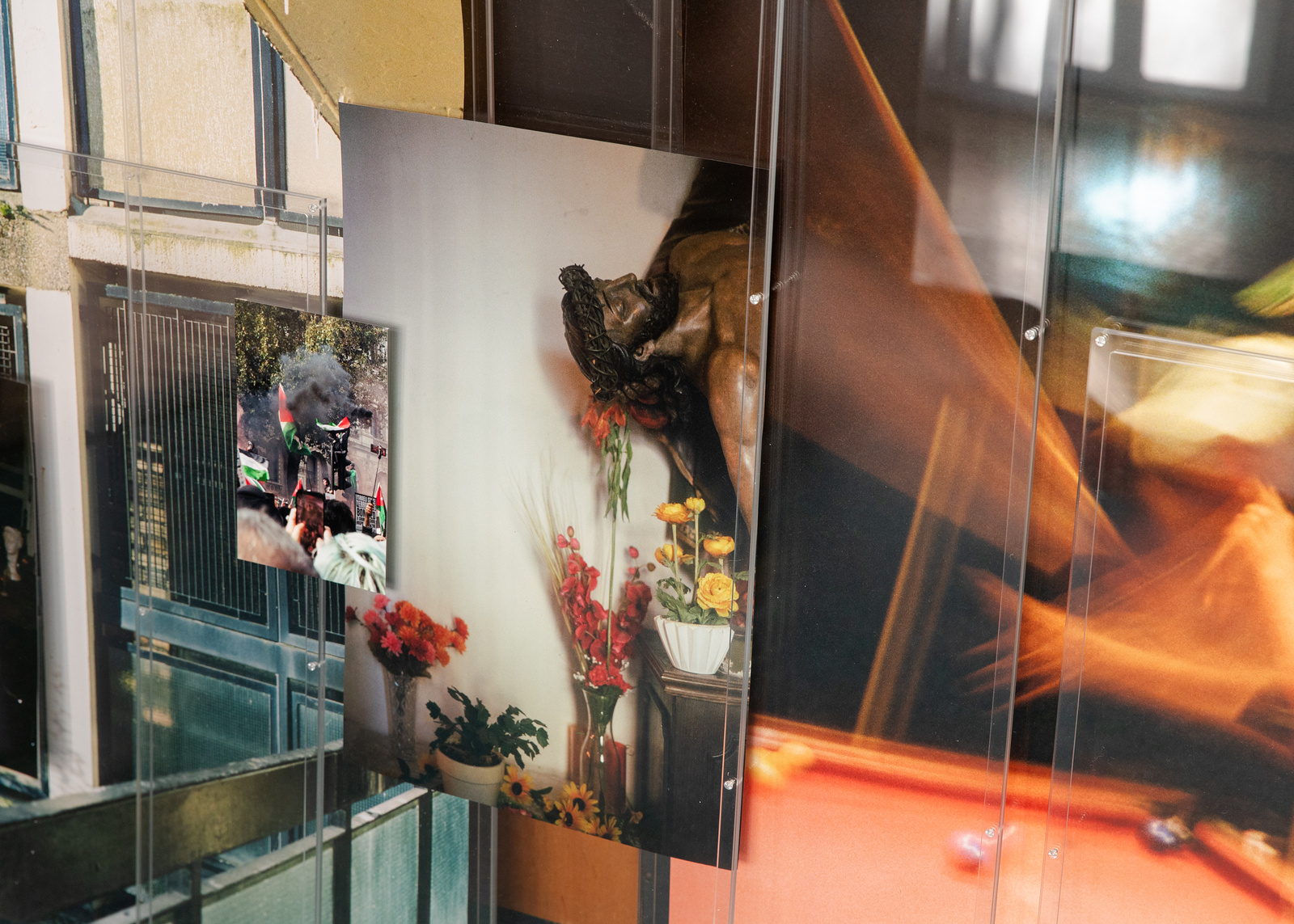
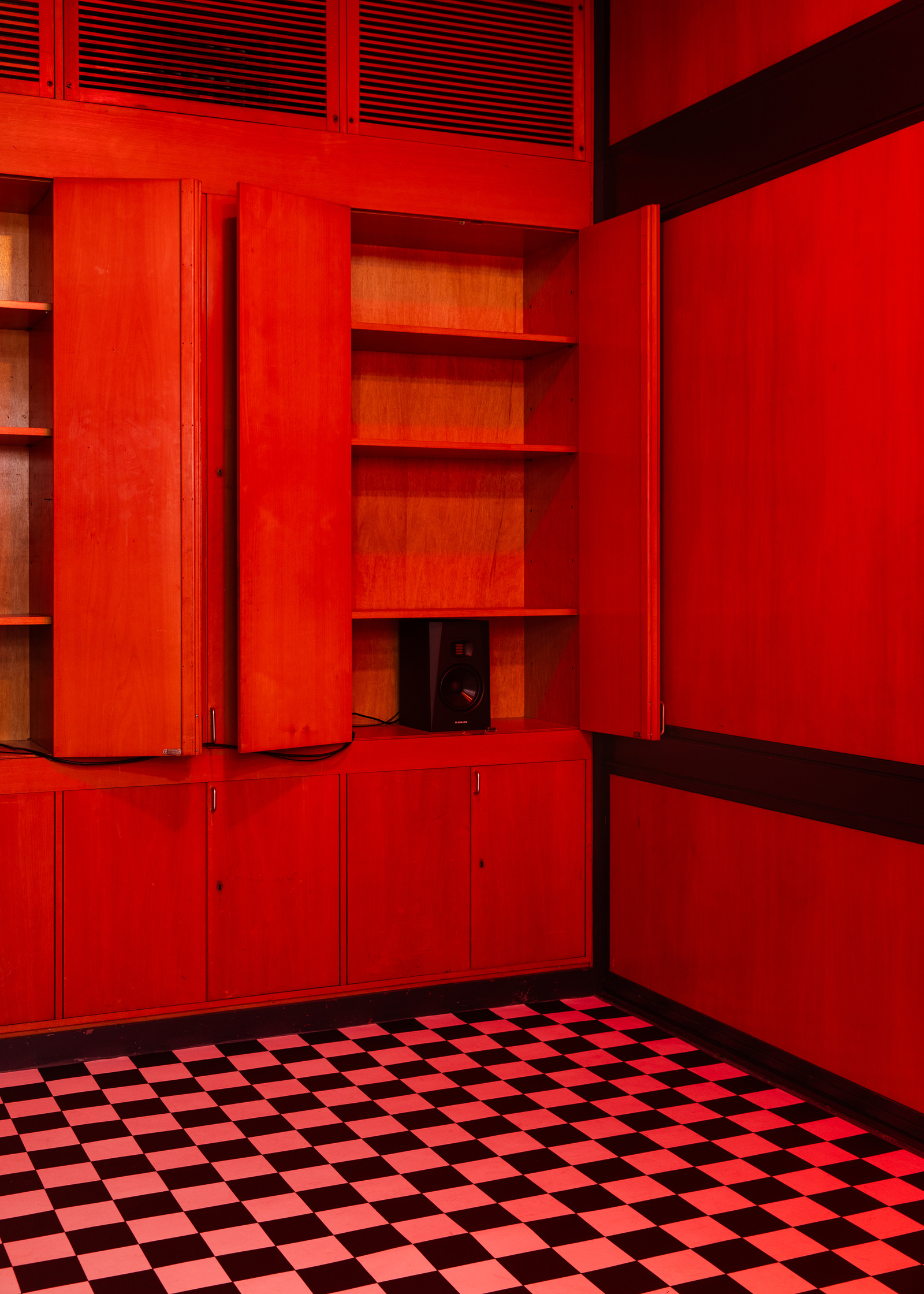
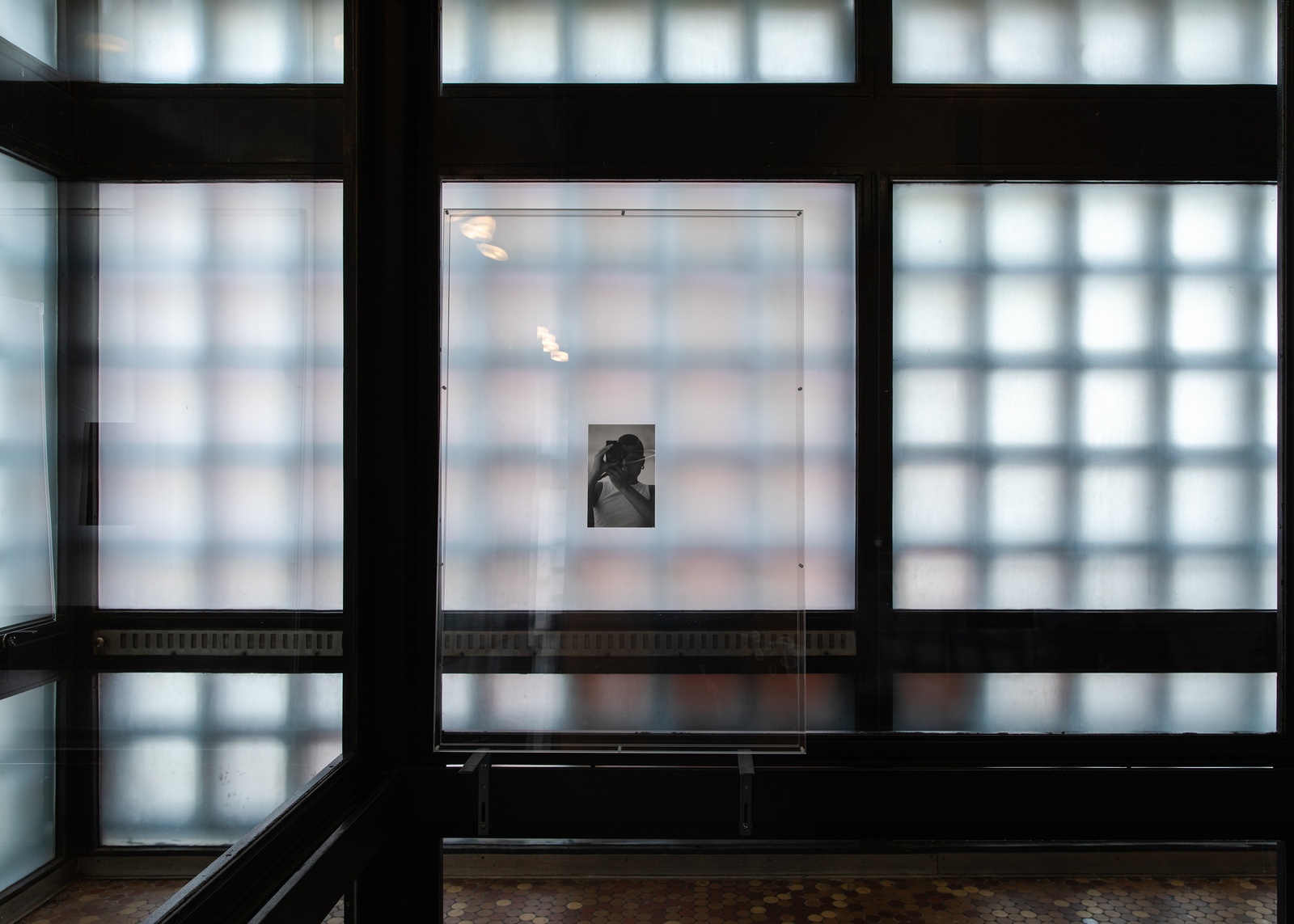
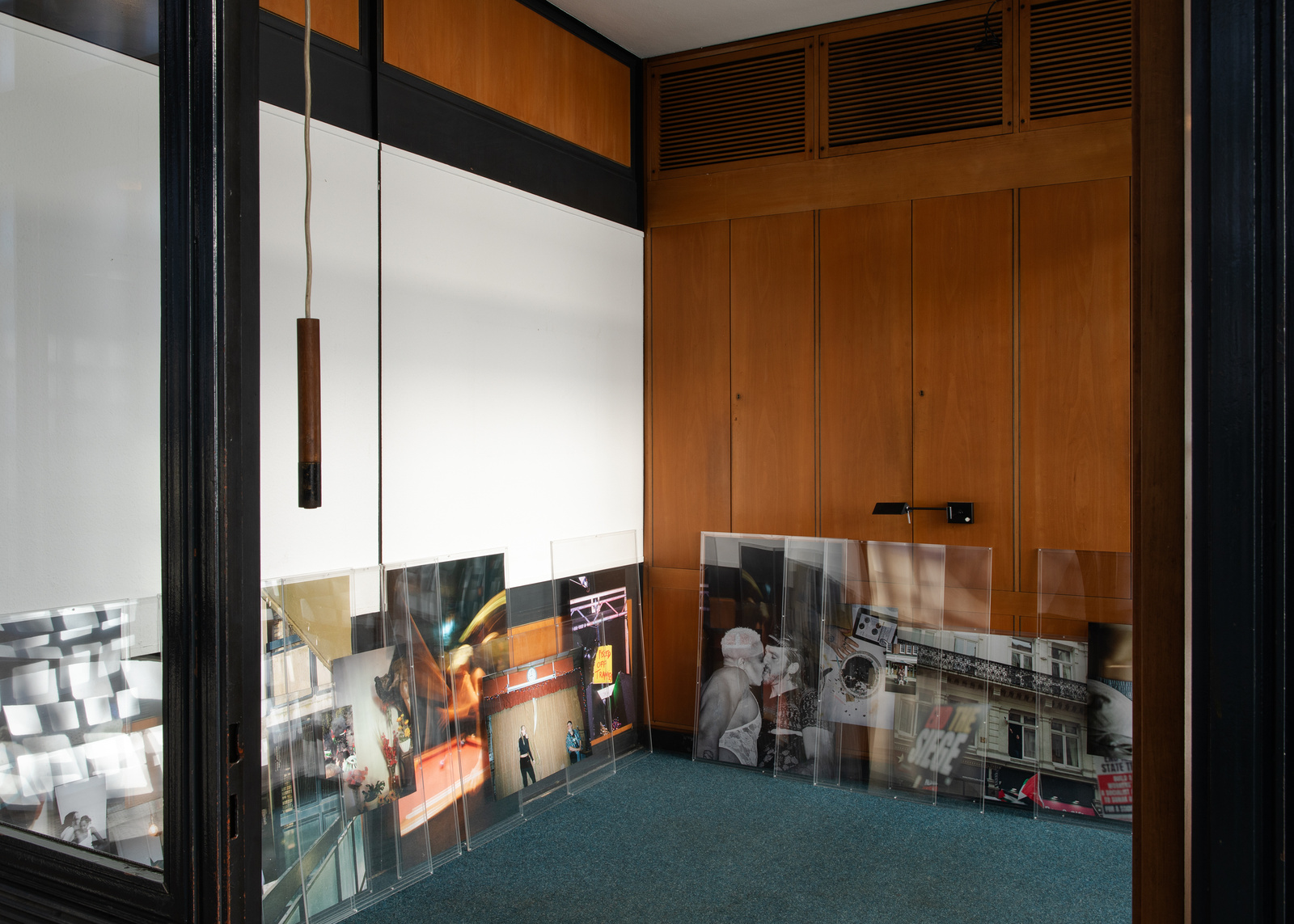
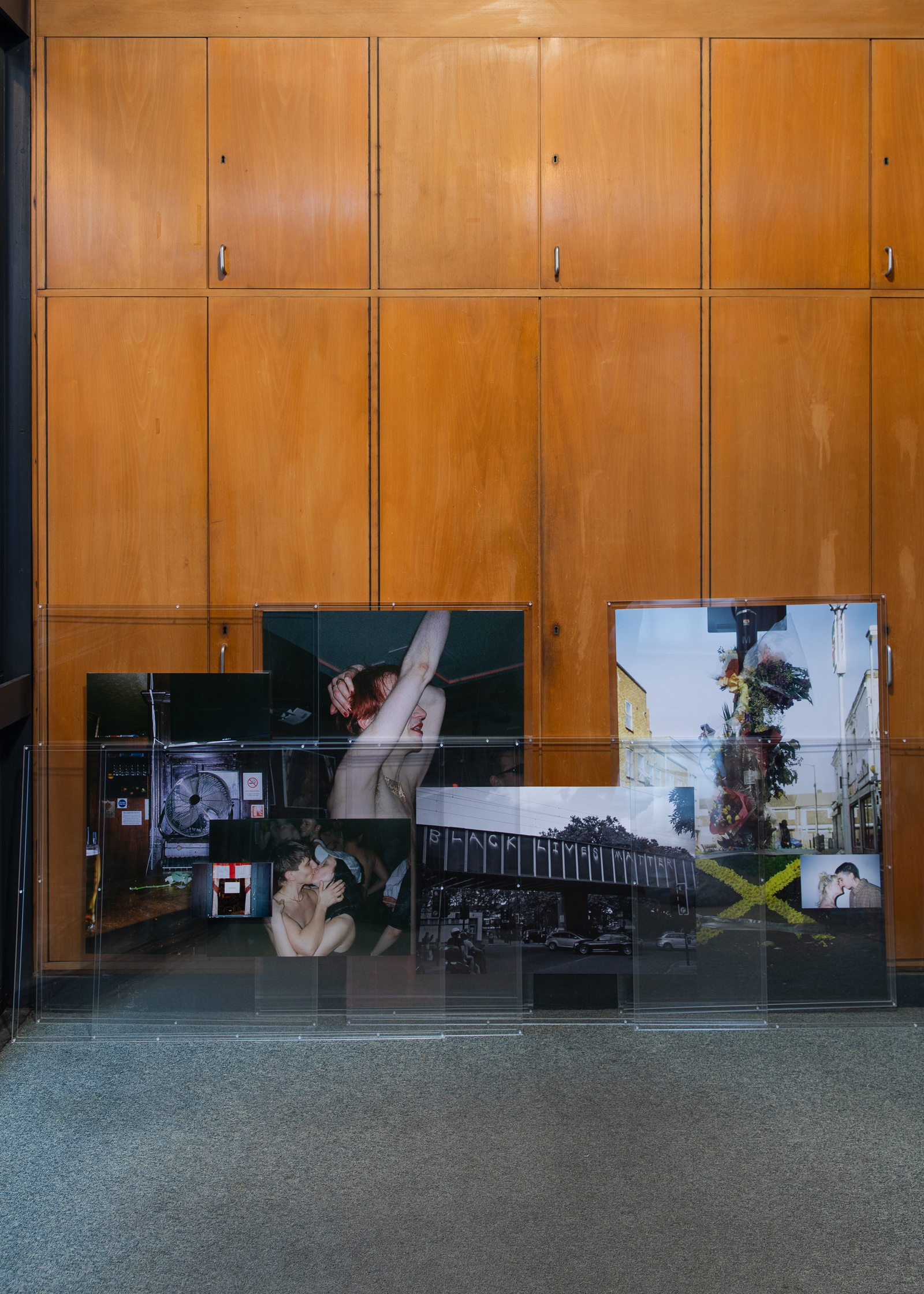
Rene Matić, AS OPPOSED TO THE TRUTH, Installation views, CCA Berlin, 2024. Photos: Diana Pfammatter/CCA Berlin.
Rene Matić (b. 1997, Peterborough, UK) is a London-based artist and writer whose practice spans across photography, film, and sculpture, converging in a meeting place they describe as “rude(ness)”—an evidencing and honouring of the in-between. Matić draws inspiration from dance and music movements such as Northern soul, Ska, and 2-Tone as a tool to delve into the complex relationship between West Indian and white working-class culture in Britain, whilst privileging queer/ing intimacies, partnerships and pleasure as modes of survival.
Since 2017, Rene Matić has participated in group and solo exhibitions at Saatchi Gallery, South London Gallery, Sadie Coles HQ, Martin Parr Foundation, Bristol, and Kunstverein Gartenhaus, Vienna among other places. In 2023, Rene Matić had their first US solo exhibition in the gallery Chapter in New York. Their work has been included in the public collection of many international institutions, such as Tate, Foundation Louis Vuitton, UK Government Art Collection, Arts Council Collection, Martin Parr Foundation, and South London Gallery etc.